Essential Tips for Planting Tomato Seeds Successfully
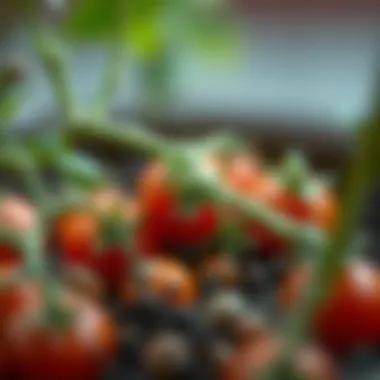
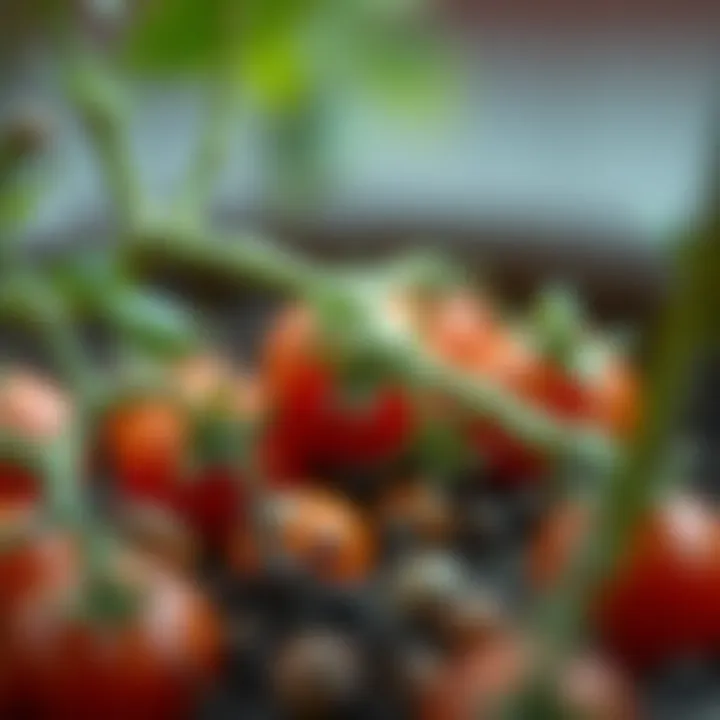
Intro
Growing tomatoes can be one of the most rewarding experiences for any gardener, whether you’re a seasoned pro or just dipping your toes into the world of gardening. This comprehensive guide delves into the ins and outs of planting tomato seeds, providing you with essential knowledge to get started on your tomato-growing journey. The timing, seed varieties, and proper techniques can make a world of difference in achieving a bountiful harvest.
Tomatoes are more than just a staple in many kitchens; they thrive in varying conditions, adapting to different regional climates and personal gardening styles. With dozens of varieties available, selecting the right seeds can feel overwhelming. But don’t fret. This guide will help you cut through the noise and focus on what’s necessary to grow healthy and fruitful plants.
In this article, we will cover:
- The best times to start your seeds based on your climate
- How to choose the right seed variety
- Techniques for indoor and outdoor germination
- Tips for transplanting and maintaining healthy plants
By the end of this guide, you’ll not only understand the various factors impacting tomato cultivation but also feel empowered to make informed decisions that could lead to a delicious harvest all summer long.
Understanding Tomato Varieties
Choosing the right tomato variety is as vital as knowing when to plant the seeds. Different varieties possess unique characteristics, impacting taste, growth habits, and overall yield. Selecting the appropriate type aligns not only with your gardening goals but also with your climate and personal preferences, ensuring a fruitful return on your planting efforts.
Determinate vs. Indeterminate
When it comes to tomato plants, understanding the difference between determinate and indeterminate varieties is key.
- Determinate Tomatoes: These plants grow to a certain height, then stop. They tend to bear fruit all at once, which is great if you want to harvest everything in one go. This can be quite handy for canning or making sauces. They often don’t require staking because their bushy growth holds them upright.
- Indeterminate Tomatoes: On the flip side, these plants keep growing and producing fruit throughout the season. This means you can enjoy a steady supply of tomatoes over a longer period, but you'll likely need to stake or cage them as they can get quite tall. These are perfect for home gardeners who prefer fresh tomatoes over an extended period.
"Understanding the growth habits of tomatoes can change the way you plan your garden, ensuring it fits your lifestyle."
Heirloom vs. Hybrid
Next, we dive into the world of heirloom and hybrid tomatoes. This choice isn’t just about aesthetics; it influences taste, growing conditions, and even sustainability.
- Heirloom Tomatoes: These are varieties that have been passed down through generations. They often boast rich flavors and vibrant colors that are a feast for the eyes as well as the palate. They’re typically open-pollinated, meaning they can be grown from seeds harvested from the parent plants, maintaining their appearance and taste over time. However, heirlooms may be more susceptible to diseases and might need a bit more care.
- Hybrid Tomatoes: These tomatoes are the result of crossbreeding two different varieties to produce certain desirable traits, such as disease resistance or higher yields. While hybrids can often provide a more reliable harvest and robust plants, some purists argue they may lack the rich flavors of heirlooms. It's all about balance; hybrids may be easier for beginners, while heirlooms can be rewarding for those willing to put in extra effort.
Incorporating the right variety into your garden sets the stage for success. Understanding these distinctions allows you to select a type that aligns with your gardening ambitions, ensuring a rich harvest tailored to your tastes and conditions.
Climate Considerations
Understanding climate considerations is crucial for every aspiring tomato gardener. Different tomato varieties thrive in specific climatic conditions, making it essential to tailor your planting strategies to your local environment. The success of your tomato harvest hinges not only on your gardening skills but also on respecting the natural rhythms of your region's climate.
Understanding Your USDA Zone
In the United States, the USDA Plant Hardiness Zone Map offers invaluable insight to gardeners when choosing what plants to grow. This map divides the country into zones based on average annual minimum winter temperatures. For example, if you're in Zone 5, you should expect winter temps to dip down between -20°F and -10°F. Knowing your zone helps you select tomato varieties that can withstand your local conditions.
Tomatoes generally prefer warmer climates and thrive in USDA zones 10 and 11. However, this doesn’t mean that if you’re in a cooler zone you’re out of luck. Many tomato varieties have been bred to tolerate lower temperatures, just remember to choose carefully.
Ways to determine your USDA zone include:
- Checking the USDA hardiness zone map on their official website (https://planning.org/knowledgebase/uploads/zone_map.pdf)
- Local agricultural extension services often provide climate data specific to your area.
Frost Dates and Their Impact
Frost dates can make or break the tomato-growing season. The last frost date in spring and the first frost date in autumn mark pivotal moments in your gardening calendar. Planting too early can expose young seedlings to frost, resulting in stunted growth or, worse, total loss.
Most gardeners benefit from following their area's frost dates. Here's how:
- Consult local calendars or resources from your local extension office. These often have tailored information that reflects your specific region.
- Pay close attention to forecasts as the frost date approaches. This ensures you’re not caught off guard and can protect your plants if an unexpected cold snap occurs.
- Use frost protection methods, like row covers or cloches, to shield young plants from sudden cold spells.
"Understanding the timing of frost is just as critical as knowing when to sow — your tomatoes will thank you for it."
Getting your timing right can allow you to optimize your harvest, leading to a bountiful crop of fresh tomatoes when they’re at their peak.
By considering factors like your USDA zone and local frost dates, you're not just planting seeds; you're creating the perfect conditions for your tomato plants to flourish.
Timing Your Planting
Timing is a make-or-break factor when it comes to planting tomatoes. Get it wrong, and you could end up with stunted plants, blighted crops, or worse—a complete crop failure. Knowing when to put those seeds in soil depends on a range of considerations, from climate to gardening style. In the following sections, we’ll explore indoor and outdoor seeding methods and a key aspect you can't overlook: soil temperature. Each choice made here can greatly influence your overall success in growing your tomatoes.
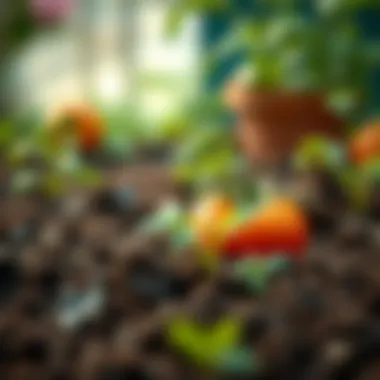
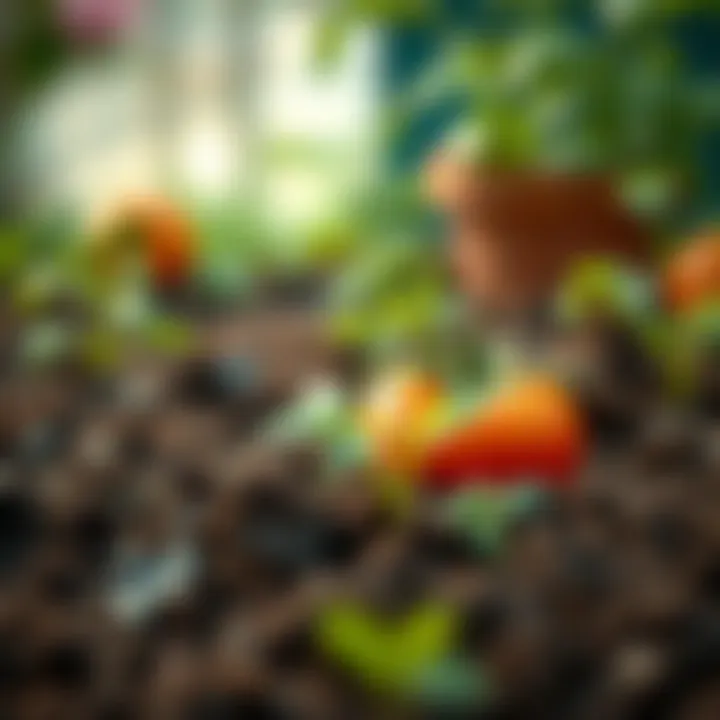
Indoor vs. Outdoor Seeding
When it boils down to starting tomato seeds, the decision between indoor and outdoor seeding is fundamental. Both approaches come with their unique merits, and making an informed choice could lead to a thriving garden.
Benefits of Starting Seeds Indoors
Starting your seeds indoors has a couple of golden advantages worth noting. For one, it allows you to get a jump-start on the growing season, making it possible to transplant seedlings in the ideal conditions later. Indoor seeding also affords the opportunity for close monitoring of environmental factors like temperature and light, protecting young plants from unexpected weather shifts.
- Consistent Environment: Indoors, you control the temperature and humidity, which are crucial in the initial sprouting stage.
- Pest Protection: Young plants face fewer pests and diseases to begin with, reducing stress during those delicate early weeks.
However, there are also drawbacks, such as a dependency on artificial light and the need for extra care during the hardening-off process before transplantation.
Transplant Timing for Outdoor Planting
Once seedlings burst forth, you have to think about the right moment to transition those little green beings to the great outdoors. Transplant timing is all about ensuring outdoor temperatures and conditions are ripe.
- Frost-Free Date: A thumb rule is to wait for your area's average last frost. Getting this wrong can be devastating; young plants are just not built for frost!
- Environmental Conditions: Besides frost, consider rainfall and overall climate; harsh winds or storms could threaten vulnerable young plants.
Timing is everything here—transplant too early or late, and consequences may range from slow growth to outright failure of the plant to establish itself.
Significance of Soil Temperature
Soil temperature cannot be overstated when it comes to successfully planting tomatoes. Rich, warm soil is the ideal highway for seeds to sprout and grow robust roots. In general, tomato seeds germinate best when soil temperatures hover between 70°F to 85°F.
- Testing Soil Temp: You can use a soil thermometer to check if the temperature meets these numbers. This is especially relevant for outdoor seeders who have to deal with natural variations.
- Warm Soil: If the ground is still chilly from winter, seedlings might just sit there like a bump on a log, while conditions improve around them.
Understanding soil temperature aids in setting a timeline that aligns with optimal growth periods.
Taking the timing of your planting into account will not only help you avoid pitfalls but also equip you to cultivate a flourishing tomato garden that yields bountiful results.
Essential Tools and Materials
When it comes to planting tomato seeds, having the right tools and materials is essential. This foundation dictates the health of your future plants and, ultimately, the quality of your harvest. By investing time in preparation and selecting the best resources, you position yourself for success in your gardening venture.
Soil Selection and Quality
Soil acts like a bed for your tomato plants, providing crucial nutrients and support. Choosing the right soil is not just about what looks good in the bag; it's about understanding the needs of your seeds. A well-draining, nutrient-rich potting mix is fundamental. This often means looking for soils specifically designed for vegetables, as they contain a balance of organic matter and minerals that tomatoes crave.
- Organic Matter: A good mix will often have compost or peat moss added to retain moisture while still allowing excess water to drain away. This mingling of elements curtails the chances of root rot, a common woe among novice gardeners.
- pH Levels: Aim for a soil pH level between 6.0 and 6.8. Too acidic or alkaline can stunt growth. Testing kits are readily available at gardening stores or online to help you determine soil pH.
- Pre-Mixed Options: If you're a beginner, there are ready-to-use mixes on the market that combine all the elements to give you a quick and effective starting point. Take a look at products from brands like Miracle-Gro or FoxFarm, which cater specifically to home gardeners and offer suitable blends for tomato seed germination.
"Good soil is like the foundation of a house; without a strong start, everything else will eventually falter."
Choosing the Right Containers
Selecting the correct containers is just as critical as soil choice. Tomato seeds need room to grow, but they also require a suitable environment to flourish. Finding the right vessels not only supports your seedlings but also ensures they develop strong root systems.
- Size Matters: Start with small pots if you're sowing indoors — 3-inch pots or seed trays work wonders. They give your seedlings the space they need without overwhelming them.
- Material Choices: Containers made from plastic or biodegradable options like peat pots or coconut coir are popular for their practicality. Plastic retains moisture well, while biodegradable containers can be planted directly into the ground. This approach minimizes any shock during transplanting.
- Drainage Holes: Regardless of what you choose, ensure that your containers have drainage holes. This is vital to prevent water from pooling, which can damage the fragile root system. A simple test is to fill your container with soil, water it fully, and observe whether it drains properly.
In summary, while tomato growing can sometimes feel laborious, preparation can simplify many of the challenges. With the right soil and containers, you set yourself off on the right foot, well on the way to a fruitful harvest.
Germination Process
Germination is where it all begins in the journey of growing tomatoes. This stage marks the transition from dormant seed to a young seedling ready to sprout. The importance of understanding the germination process cannot be overstated. It sets the tone for the health and vitality of your tomato plants. Successful germination leads to strong seedlings, which in turn grow into productive plants. Failing at this stage can lead to disappointing results, leaving you with weak or even non-existent plants.
There are multiple elements that influence germination, such as moisture, temperature, and time. Each plays a critical role in ensuring seeds can break dormancy and sprout. If the conditions are less than ideal, seeds may rot or fail to germinate altogether. Therefore, having a clear grasp of these factors can mean the difference between a bountiful harvest and a barren plot.
Watering Techniques
Water is a vital ingredient in the germination process, yet it must be applied judiciously. Too much water can drown possible seedlings, while too little can cause them to dry out before they emerge. The goal is to maintain moisture without oversaturating the soil. Here are some techniques to consider when watering your tomato seeds:
- Bottom Watering: Place your seed trays in a shallow tray filled with water. The soil will absorb the moisture through the holes in the trays, allowing for even saturation without the risk of displacing seeds.
- Misting: Use a fine mist spray to lightly dampen the soil surface without making it too soggy. This method is particularly useful for delicate seeds that need gentle handling.
- Tarp Covers: Utilizing a light tarp can help maintain humidity levels while also protecting the seeds from excessive evaporation. This technique encourages steady moisture levels while the seeds are germinating.
Key Tip: Always check for signs of mold or algae, which may indicate overwatering. The soil should feel moist but not soggy.
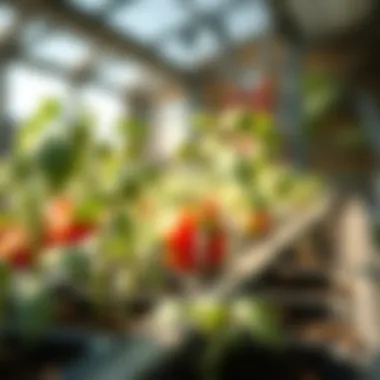

Light Requirements for Germination
Light plays a significant role in germination, although not in the way one might think. During the initial stages of germination, seeds do not require light to sprout. However, once the seeds emerge from the soil, adequate light becomes essential. Insufficient light can lead to leggy, weak plants that struggle to thrive.
When seedlings begin to appear, they should be exposed to bright light, ideally around 12-16 hours a day. If natural light isn't enough or if you're starting seeds indoors, consider using grow lights:
- Full-spectrum LED lights replicate the sunlight spectrum, providing the necessary energy for photosynthesis.
- Fluorescent lights also work well and are more cost-effective.
Transplanting Seedlings
Transplanting seedlings is a crucial step in the journey of growing tomatoes. Successfully moving plants from the nursery stage to a garden bed or larger containers can significantly impact their growth and yield. It’s about giving your tomato plants the best possible chance to flourish in the soil and conditions suited for them. Getting this transition right ensures strong development and reduces stress on the seedlings, enabling them to settle into their new environment effortlessly.
Identifying Transplant Readiness
Knowing when to transplant your seedlings can feel like walking a tightrope. It’s an art as much as it is a science. Here are a few telltale signs that your tomato seedlings are ready to go off on their own:
- Height and Sturdiness: Your seedlings should be about 4 to 6 inches tall with sturdy stems. If they start looking leggy, it’s a good indication they’re reaching for more light and could use a change of scenery.
- Leaf Formation: Look for the appearance of true leaves. These are the second set that grow after the initial seed leaves, and their emergence generally signals that the plant is ready for the big move.
- Root Development: If the roots are beginning to outgrow the original container, that’s another sign. If you gently remove the seedling to check, you should see roots starting to circle the pot. It’s a strong signal it's time to plant.
- General Hardiness: The seedlings should look healthy and vibrant, not weak or yellowing. If they seem etiolated or sluggish, it might be better to hold off on transplanting until they gain strength.
These markers can help you gauge whether your young plants are ready to take the leap or if they need a little more time in their cozy starter pots.
Best Practices for Transplanting
Once you've determined it's time to transplant your seedlings, applying best practices will set you on the right path to success. Here’s what you should keep in mind:
- Timing: Aim for transplanting on overcast days or in the late afternoon. This minimizes stress since direct sunlight can scorch tender leaves.
- Soil Preparation: Ensure the soil is rich and well-draining, mixed with compost or organic materials can enhance fertility. Prepping your garden bed ahead of time will help plants adjust quickly.
- Planting Technique: When you remove seedlings from their containers, handle them by the leaves, not the stems. Create holes in the soil that are deep enough to accommodate the seedlings, allowing them to be planted snugly up to the base of the leaves.
- Watering: Immediately after planting, give them a good drink. This helps settle the soil around the roots. Following this, maintain consistent moisture but avoid waterlogging.
"Transplanting is not just about moving a plant. It’s about positioning it for success."
- Spacing: Allow adequate space between plants as tomatoes tend to grow quite large. A typical spacing of 18 to 24 inches is usually good.
- Post-Transplant Care: Keep a close eye on your new transplants for the first week. They might seem a little droopy as they adjust. Regularly check the moisture level in the soil and protect them from harsh winds or strong sunlight until they’re more established.
By following these practices, you're stacking the odds in your favor for a bountiful tomato harvest. Successful transplanting can make the difference between a fruitful garden and one that struggles to produce, so take your time and care during this step.
Watering and Nutrient Management
Watering and nutrient management are key components for successful tomato growing. Too much or too little water can spell disaster for young plants. Tomatoes are particularly sensitive to their water intake; they love consistent moisture, but drown them, and root rot could be the least of your worries. Likewise, nutrient management ensures that your tomato plants get the best possible start in their growing journey.
Importance of Watering
Successfully managing water can make all the difference when planting tomato seeds. Mothers often say, "water is life," and when it comes to plants, this is no different. Tomatoes prefer evenly moist soil that simulates their natural habitat. This consistency prevents stress, which could affect their growth and yield.
Additionally, the timing of watering is important. Morning watering is often cited as the best practice because it allows time for excess moisture to evaporate, minimizing risks of fungal diseases. Conversely, late-afternoon watering can keep plants wet overnight, which can, unfortunately, lead to fungal issues.
Watering isn’t just about how much you give but also how you do it. Drip irrigation is highly effective for tomatoes as it delivers water directly to the root zone, reducing waste while ensuring that the delicate leaves remain dry.
"Consistent watering leads to healthy roots, healthy plants, and ultimately, a bountiful harvest."
Irrigation Techniques
There are several irrigation techniques that can cater to the needs of your tomato plants, each with its pros and cons. Here are some popular methods:
- Drip Irrigation: This method utilizes tubing or flexible pipes with small emitters to deliver water straight to the base of each plant. It's efficient and effective, conserving water and minimizing the risk of disease.
- Soaker Hoses: A less expensive alternative that allows moisture to seep through the hose directly into the soil. Good for larger garden beds but may not provide as precise control as drip irrigation.
- Flood Irrigation: Best suited for crops grown in rows. Water floods along trenches between rows. While this method is economical in terms of water use, you must keep a close eye on how wet the soil becomes.
- Sprinklers: These distribute water over a larger area, but they can wet the foliage and promote fungal diseases. If using this method, avoid watering in the evenings where possible.
Fertilization Strategies
Fertilization is vital for ensuring your tomato plants receive the nutrients they need to grow robustly. Many gardeners find that using organic fertilizers yields the best results. Here’s what you should consider when planning your fertilization strategy:
- Soil Testing: Conducting a soil test helps you understand nutrient levels and pH balance. Many local extension services provide kits for this purpose that can guide your fertilization approach.
- NPK Ratio: Look for fertilizers labeled with N-P-K ratios (Nitrogen-Phosphorus-Potassium). A common ratio for tomatoes is 5-10-10. Nitrogen encourages leafy growth, phosphorus stimulates root and flower development, and potassium helps overall plant health.
- Timing is Everything: Start with a slow-release fertilizer when transplanting. Once flowers appear, you might switch to a liquid fertilizer every couple of weeks to give those tomatoes a boost.
- Additions of Organic Matter: Compost and well-rotted manure can improve soil health and provide slow-release nutrients.
- Balanced Approach: Over-fertilizing can backfire; monitor plant responses carefully. Too much nitrogen can lead to lush foliage with fewer fruits, which can be less than ideal.
By ensuring the right balance of water and nutrients, you're setting the stage for a plentiful tomato harvest. Pay attention to how specific varieties react to watering and nutrient strategies since this can vary widely, adding another layer to your cultivation experience.
Pest and Disease Prevention
When it comes to growing tomatoes, maintaining plant health is key. Pests and diseases can quickly turn a thriving garden into a graveyard of wilted dreams if not managed properly. Preventing these issues is crucial for both yield and quality of your harvest. Awareness of the common threats and implementing the right strategies can save you considerable time and effort while ensuring your plants reach their full potential.
Identifying Common Pests
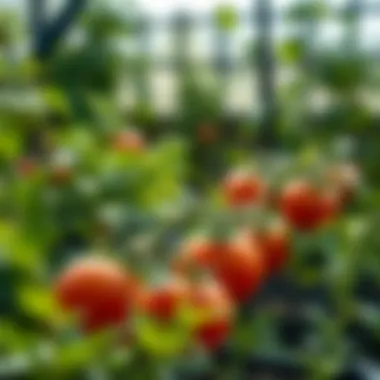
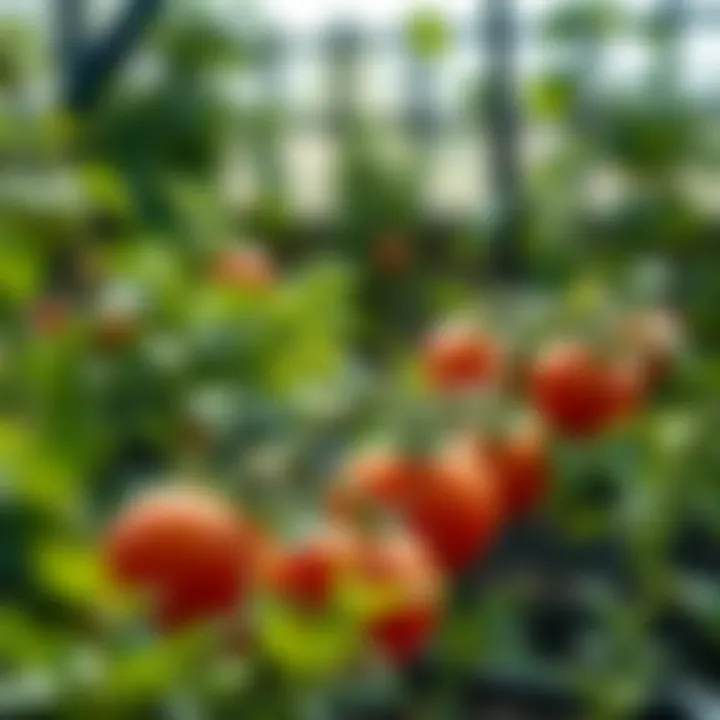
Pests can swoop in like vultures, preying on your fragile tomato plants. Knowing how to identify them is the first step in defending your precious crops.
- Aphids: These tiny green or black bugs tend to cluster on the tender parts of the plant. They sap the plant's nutrients, leading to deformation. You might notice distorted leaves or a sticky residue.
- Whiteflies: Often found on the undersides of leaves, they release a sticky honeydew that encourages sooty mold. A sudden increase in their numbers can destroy your plant before you know it.
- Spider Mites: They thrive in dry conditions and are nearly invisible to the naked eye. Utilize a magnifying glass; if you spot tiny webs or stippling on leaves, you might have an infestation.
- Tomato Hornworms: Large, green caterpillars that can strip a plant bare overnight. Their presence is often signaled by large holes in the foliage.
Having an eyefor these critters can turn the tide in your favor, allowing you to take action before they wreak havoc on your harvest.
Disease Management Techniques
Investing a bit of effort in disease management can pay off in the long run. Here are some practical approaches you might consider:
- Crop Rotation: Avoid planting tomatoes in the same spot year after year. This keeps pathogens from building up in the soil, thereby reducing your plants' exposure to diseases.
- Cleanliness: Keeping a tidy garden is non-negotiable. Clear out any dead plant material that can harbor diseases. Regularly sanitize your tools to prevent unwanted germs from spreading.
- Resistant Varieties: Opt for tomato varieties that are bred with resistance to common diseases like blight. It might seem like a small detail, but it can make a world of difference.
- Proper Watering: Overhead watering can lead to fungal diseases. Instead, water the base of the plant. Drip irrigation is an excellent way to avoid wetting the foliage.
- Fungicides: Use these as a last resort. If your plants show early signs of blight, a proper fungicide can help to manage the disease, but it should not be the first line of defense.
Remember: Being proactive is always better than dealing with the aftermath of a pest or disease outbreak.
Harvesting Techniques
Harvesting tomatoes is not just a simple act of plucking fruit from the vine; it is a crucial phase where diligent gardeners can truly appreciate the fruits of their labor. Understanding the right techniques and timing is essential for ensuring that the tomatoes are at their peak flavor and quality. The methods you choose can impact not only the taste but also the shelf life of your tomatoes.
When to Harvest Tomatoes
Timing your harvest can feel a bit like playing a game of chicken—wait too long, and you risk overripe fruits, which may attract pests or start to rot. On the flipside, harvesting too early can result in tomatoes that lack sufficient flavor. You want to strike that golden balance. Generally speaking, tomatoes should be harvested when they exhibit a rich, vibrant color, depending on the variety. For most types, this means a deep red hue, but some heirlooms, like Cherokee Purple, might present a beautiful deep purple when ripe.
A few tips for when to harvest include:
- Feel the Firmness: Ripe tomatoes should yield slightly when pressed gently yet maintain a firm body.
- Check the Color: Skin color changes are key indicators. Satiny skin that's even in color suggests readiness.
- Avoid a Green Stem: If the stem is still green and firm, it might be an indicator that the fruit is not fully ripe. Harvest when the stem begins to brown slightly.
"A moment of patience in harvesting can lead to a lifetime of flavor on your plate."
Proper Harvesting Methods
Once you’ve determined that your tomatoes are ripe and ready, the method of harvesting should ensure minimal damage to the fruit and the plant. Here are some keys to effective harvesting:
- Use Clean Tools: Always use sharp, clean shears or scissors. This prevents tearing and bruising and reduces the chance of introducing disease to the plant.
- Handle with Care: When picking tomatoes, try to hold the fruit gently in your hand and twist slightly until it snaps or cuts cleanly from the vine. Avoid pulling directly, as this can damage the plant and remaining tomatoes.
- Leave a Bit of Stem: For storage purposes, it’s beneficial to leave about an inch of the stem on the tomato. This not only helps in keeping the fruit fresh longer but also minimizes bruising.
- Store Promptly: After harvesting, try to sort your tomatoes quickly. Place them stem-side up in a single layer to avoid unnecessary pressure on the fruit.
Keeping in mind these harvesting techniques will allow you to enjoy not just a bountiful harvest, but also a delicious one that’s sure to impress any palate.
Preserving Your Harvest
Preserving your harvest is not only a practical approach to enjoying your hard work, but it also allows for the enjoyment of seasonal flavors year-round. When you nurture tomato plants, the anticipation builds as you see their fruits ripen. It's like holding onto golden opportunities; once you have them, it’s essential to make the most out of every tomato.
By using effective preservation techniques, you can minimize food waste and savor the taste of homegrown tomatoes long after the growing season ends. Proper preservation methods not only maintain freshness but also enhance flavors, making even the simplest dishes sing with summer goodness. So why leave tomatoes languishing in the fridge when you could turn them into something extraordinary?
Canning and Freezing Techniques
Canning and freezing are two of the most common preservation methods for tomatoes. Each method has its nuances and benefits.
Canning Tomatoes
- Hot Water Bath Canning: This method involves boiling jars of tomatoes for a specified time, creating a vacuum seal. It’s effective for whole, diced, or pureed tomatoes.
- Pressure Canning: This approach is necessary for low-acid foods. Tomatoes can sometimes fall in this category when mixed with other vegetables, so using a pressure canner ensures safety.
- Storage: Store sealed jars in a cool, dark place. Unsealed jars can be refrigerated and used within a week.
- Process: Wash jars and lids thoroughly. Pack tomatoes, leaving a bit of headspace. Add lemon juice or citric acid for added preservation. Cover with boiling water and process according to the guidelines specific to your altitude.
Freezing Tomatoes
- Blanching: Before freezing, wash and core tomatoes, then briefly blanch them in boiling water for about a minute. This step helps preserve color and flavor.
- Freezing Whole or Chopped: After blanching, plunge them into ice water, let them cool, then drain. Place either whole or chopped tomatoes in freezer bags, removing air to prevent freezer burn.
- Storage: Label your bags and freeze them flat for convenient storage. Frozen tomatoes are ideal for sauces, soups, or stews as they maintain flavor even when thawed.
Both methods have their champions, so it’s worth exploring which fits your lifestyle and cooking habits better.
Creative Uses for Excess Tomatoes
Having an overabundance of tomatoes can feel overwhelming, but creativity can turn that into an advantage. Instead of letting them sit around getting squishy, consider these methods:
- Salsa: Fresh tomatoes lend themselves beautifully to homemade salsas. Combine chopped tomatoes, onions, cilantro, lime juice, and jalapeños for a vibrant dip that brightens any gathering.
- Tomato Sauce: A classic use, simple tomato sauce can be made quickly. Just sauté onions and garlic, add diced tomatoes, herbs like basil or oregano, and let it simmer.
- Chutney: Transform excess tomatoes into a sweet and spicy chutney that pairs well with cheeses and meats. Cook down tomatoes with vinegar, sugar, and spices for a unique condiment.
- Dried Tomatoes: Consider dehydrating your tomatoes. Sliced and dehydrated in a food dehydrator or oven, they make for fantastic snacks or pizza toppings.
- Tomato Jam or Preserves: Yes, you can even make jam with tomatoes! Combine them with sugar and spices for a unique spread that’s excellent on toast or with cheese.
"The beauty of excess tomatoes lies in your imagination; don’t just preserve them, create something delicious!"
Thinking outside the box can lead to delightful culinary journeys and ensure that you enjoy every single fruit that you’ve nurtured in your garden.
For more details on preservation and recipes, visit resources like National Center for Home Food Preservation or check out USDA guidelines.
Choosing the right preservation method not only enriches your cooking but ensures that the flavors remain vibrant throughout the year.



